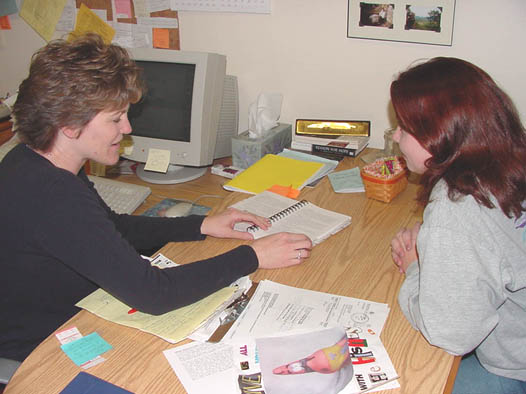Finding an even balance

November 21, 2002
Many Simpson faculty members say they are concerned about faculty shortages for the 2003-2004 school year, but school officials say they are trying to accommodate high-demand departments in the future.
According to Bruce Haddox, academic dean, in 1996 there were 73 faculty members to 1,254 full-time students. In 2002, there are 84 faculty to 1,353 full-time students. This indicates a 15 percent increase in faculty and a 7.9 percent increase in full-time students.
“We pride ourselves on working closely with students and small classes do this,” said Haddox.
According to Haddox, the social sciences department is first on the list to receive a new faculty member.
Lora Friedrich, chair of the social sciences department, said she averages 40 advisees in the department. With only four faculty members, she said she is concerned about the lack of faculty in her department.
“Criminal justice and sociology have over 100 majors, including social work minors,” she said. “They’ve [the administration] said we would be getting additional faculty the past couple years, but last year was not possible due to low enrollment and this year the endowment was down because of the stock market.”
There are two issues administrators look at to decide which department gets new faculty.
“One thing we look at is if we have enough faculty to deliver what we want to deliver to the students in that program,” said Haddox. “We also try to decide if a department needs a new faculty member to help with the quality of the program and the overall academic curriculum.”
According to Haddox, other departments in line for more faculty include political science, philosophy, biology, art and communication studies.
Dave Richmond, chair of the art department, said an art historian is essential to the education of art majors.
“We have two professors whose specialty is the making of art,” he said. “We have art history background but we feel that an individual properly trained in art history would do a better job teaching our students.”
Brian Steffen, chair of the communication studies department, said he has 50 advisees. Scheduling meeting time is only part of his concern.
“I am available for informal meetings all the time,” he said. “When scheduling time comes I block out enough time to get it done. I encourage students to come prepared and be the first one to sign-up on my door.”
Departments use many strategies to compensate for the lack of faculty.
“A lot of departments have high demands and many advisees,” said Steffen. “We just try to manage carefully and use part-time professors to fill in.”
Social sciences relies on adjunct professors as well.
“We all teach overload and rely on adjuncts to fill in the holes,” Friedrich said.
Because of the lack of faculty, classes aren’t offered as frequently.
“Classes are not as available to students as we would like,” said Friedrich. “Classes that could be filled every semester are only offered once a year or once every other year.”
With the lack of faculty, classes that are offered will have a larger number of students.
“As classes get bigger, there is less discussion and less interaction in the classroom,” said Friedrich. “It also makes a different relationship with the faculty and I think the quality changes.”
Another concern for Friedrich is the way students are tested in the larger classroom.
“I feel that essay exams are a much better way to test the knowledge and understanding of the material being tested,” she said.











